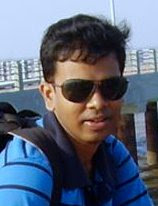 Its been more than 57 hours now that the battle had started between the NSG commandos and the Islamic Militants which finally has come to an end. A state official says the siege has ended at Mumbai's Taj Mahal hotel and the last 3 gunmen have been killed. Over 150 people were killed and more then 300 injured when suspected Islamic militants attacked 10 sites in Mumbai.
Its been more than 57 hours now that the battle had started between the NSG commandos and the Islamic Militants which finally has come to an end. A state official says the siege has ended at Mumbai's Taj Mahal hotel and the last 3 gunmen have been killed. Over 150 people were killed and more then 300 injured when suspected Islamic militants attacked 10 sites in Mumbai. Black-clad Indian commandoes raided two luxury hotels to try to free hostages on Thursday, and explosions and gunshots shook India's financial capital a day after the attacks.
About 10 to 12 gunmen remained holed up inside the hotels and a Jewish center, Dozens of people were being held hostage at this places.
While hostages trickled out of the hotels throughout the day, witnesses said many bodies remained inside and the two-day siege showed few signs of ending quickly. Several bodies were carried out of the five-star Taj Mahal Palace and oberio & Trident Tower hotel. According to the witnesses, attackers had specifically targeted Britons and Americans inside the hotels.
A previously unknown Islamic militant group claimed responsibility for the carnage, the latest in a series of terror attacks over the past three years that have dented India's image as an industrious nation galloping toward prosperity.
The most high-profile target was the Taj Mahal hotel, a landmark of Mumbai luxury since 1903, and a favorite watering hole of the city's elite.
At least three top Indian police officers - including the chief of the anti-terror squad - were among those killed.
An Indian media report said a previously unknown group calling itself the Deccan Mujahideen claimed responsibility for the attacks in e-mails to several media outlets. There was no way to verify that claim.
Magnus Ranstorp, a terrorism specialist with the Swedish National Defense College, said there are "very strong suspicions" that the coordinated Mumbai attacks have a link to al-Qaida. He said the fact that Britons and Americans were singled out is one indicator, along with the coordinated style of the attacks.

India's prime minister blamed "external forces."
"The well-planned and well-orchestrated attacks, probably with external linkages, were intended to create a sense of panic, by choosing high profile targets and indiscriminately killing foreigners," Singh said in address to the nation.
Among the other places attacked was the 19th century Chhatrapati Shivaji railroad station - a beautiful example of Victorian Gothic architecture - where gunmen sprayed bullets into the crowded terminal, leaving the floor splattered with blood.
Other gunmen attacked Leopold's restaurant, a landmark popular with foreigners, and the police headquarters in southern Mumbai, the area where most of the attacks took place. Gunmen also attacked Cama and Albless Hospital and G.T. Hospital.
About 10 to 12 gunmen remained holed up inside the hotels and a Jewish center, Dozens of people were being held hostage at this places.
While hostages trickled out of the hotels throughout the day, witnesses said many bodies remained inside and the two-day siege showed few signs of ending quickly. Several bodies were carried out of the five-star Taj Mahal Palace and oberio & Trident Tower hotel. According to the witnesses, attackers had specifically targeted Britons and Americans inside the hotels.
A previously unknown Islamic militant group claimed responsibility for the carnage, the latest in a series of terror attacks over the past three years that have dented India's image as an industrious nation galloping toward prosperity.

The most high-profile target was the Taj Mahal hotel, a landmark of Mumbai luxury since 1903, and a favorite watering hole of the city's elite.
At least three top Indian police officers - including the chief of the anti-terror squad - were among those killed.
An Indian media report said a previously unknown group calling itself the Deccan Mujahideen claimed responsibility for the attacks in e-mails to several media outlets. There was no way to verify that claim.
Magnus Ranstorp, a terrorism specialist with the Swedish National Defense College, said there are "very strong suspicions" that the coordinated Mumbai attacks have a link to al-Qaida. He said the fact that Britons and Americans were singled out is one indicator, along with the coordinated style of the attacks.

India's prime minister blamed "external forces."
"The well-planned and well-orchestrated attacks, probably with external linkages, were intended to create a sense of panic, by choosing high profile targets and indiscriminately killing foreigners," Singh said in address to the nation.
Among the other places attacked was the 19th century Chhatrapati Shivaji railroad station - a beautiful example of Victorian Gothic architecture - where gunmen sprayed bullets into the crowded terminal, leaving the floor splattered with blood.
Other gunmen attacked Leopold's restaurant, a landmark popular with foreigners, and the police headquarters in southern Mumbai, the area where most of the attacks took place. Gunmen also attacked Cama and Albless Hospital and G.T. Hospital.


